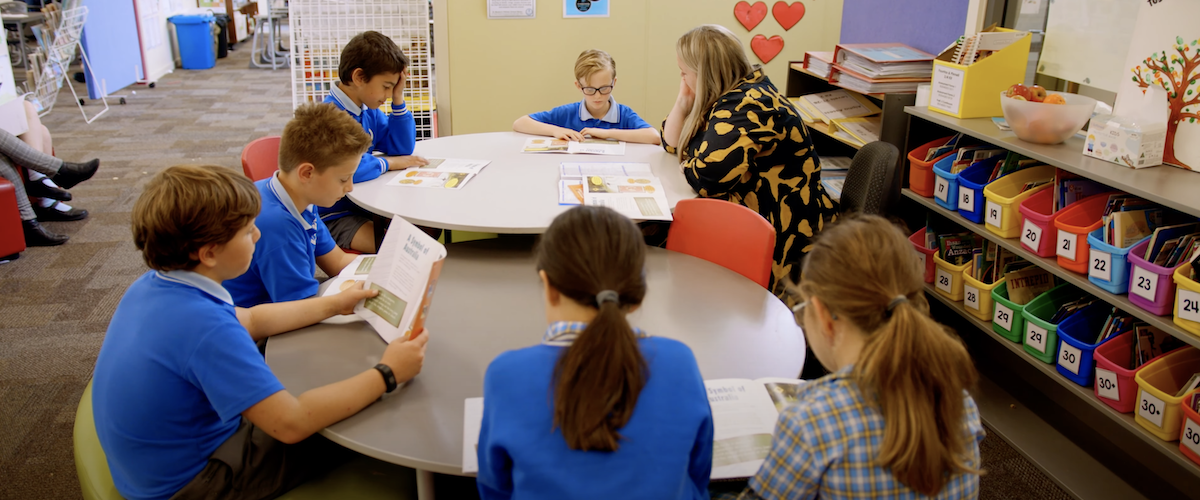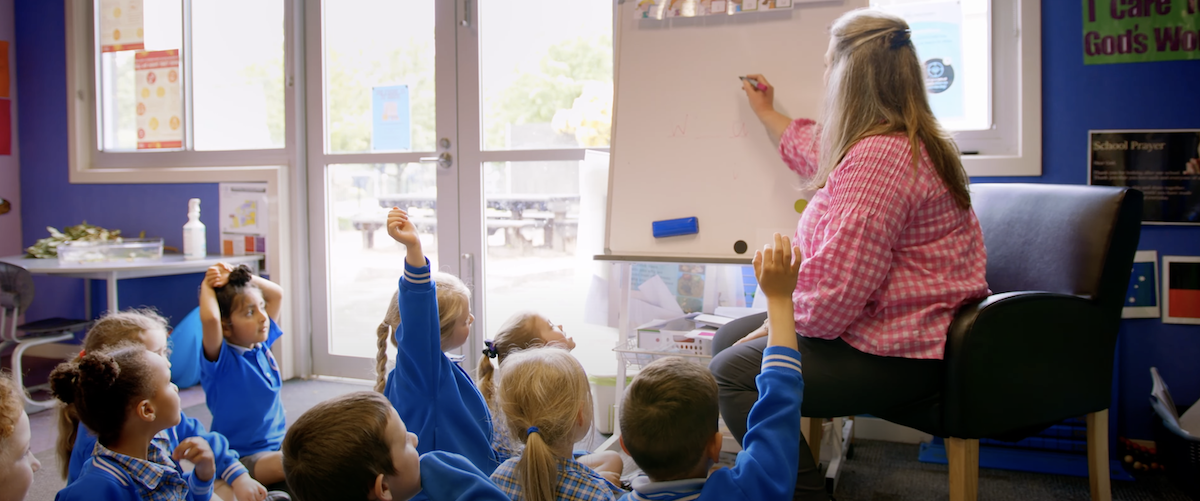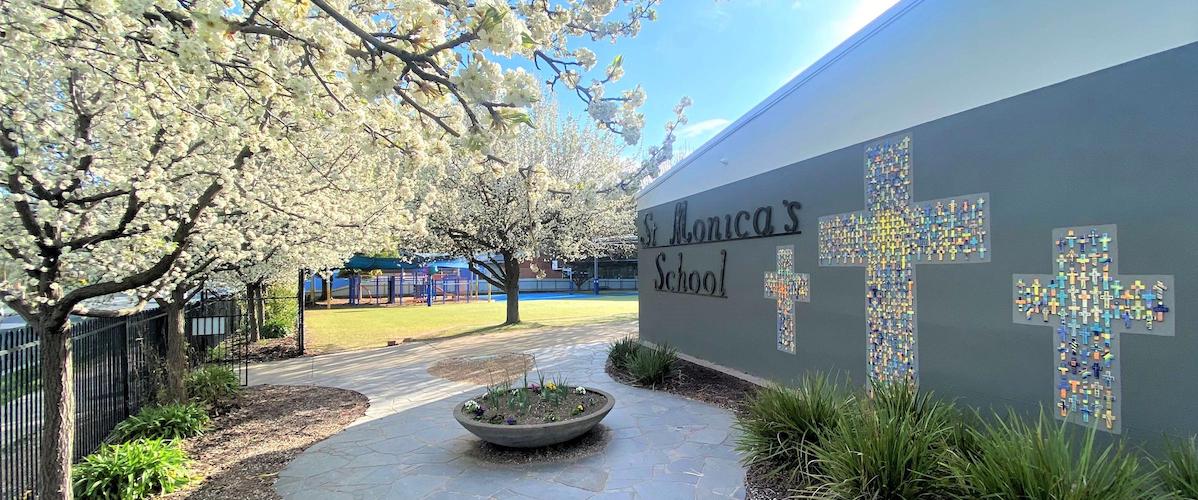RATIONALE:
All children have a right to feel safe and to be safe. As teachers, we have a legal and moral responsibility to respond to serious incidences involving abuse and neglect of the children with whom we have contact, and to report instances that involve physical, emotional, psychological, sexual abuse or neglect.
The dignity of the human person, who is created in the image and likeness of God, is the foundation of Catholic Social Teaching. This Catholic anthropology leads us to afford all people, but especially children, young people and the most vulnerable, the highest respect. Within this context, effective Catholic schools provide a safe, supportive and secure environment that promotes respect and care and values diversity. The mental, physical, spiritual and emotional wellbeing of children and young people are essential preconditions for successful learning. These qualities cannot be developed for individuals in isolation from the health and wellbeing of the school community as a whole.
Saint Monica’s is committed to the creation of a safe, just and respectful environment that supports wellness for all members of the school community. In this, there is a moral obligation and shared responsibility to protect the most vulnerable members of the community.
Saint Monica’s believes that, while protecting children and young people against sexual abuse is a community wide responsibility, schools have particular moral and legal responsibilities to ensure children and young people are safe in their care and to actively and intentionally work to eliminate all forms of abusive behaviours towards children. There are also particular moral and legal obligations for those in authority to prevent, reduce and minimise child abuse and exploitation in all forms.
AIMS:
This policy applies to the whole school community in supporting a safe environment for all children and young people.
It concerns the Crimes Act 1958 (Vic) and the Crimes Amendment (Grooming) Act 2014 which commenced in Victoria on 9 April 2014, introducing the offence of Grooming for sexual conduct with a child under the age of 16 years. The Crimes Amendment (Grooming) offence provides that the offence of grooming concerns:
- predatory conduct designed to facilitate later sexual activity with a child.
- an adult communicating, in person or electronically, by word or conduct, with a child under the age of 16 years or with a person who has care, supervision or authority for the child with the intention of facilitating the child’s involvement in sexual conduct, either with the groomer or another adult.
- sexual conduct which constitutes an indictable offence.
Note: Grooming does not necessarily involve any sexual activity or even discussion of sexual activity – for example it may involve establishing a relationship with a child, parent or carer for the purpose of facilitating sexual activity at a later time.
The offence can be committed by any person aged 18 years and over. It does not apply to communication between people who are both under 18 years of age.
The offence applies to communication with children under 16 years, but not to communication with 16 and 17 year old children. This distinction between children aged below 16 and those aged 16 or 17 reflects the general age of consent (16 years) recognised by the criminal law in relation to sexual offences.
KEY PRINCIPLES:
A safe environment is required to protect children and young people from harm and to prevent staff from abusing their position of authority and trust.
The child and young person's ongoing safety and wellbeing must be the primary focus of all decision making.
School leaders and staff must be fully self-aware of, and comply with, their professional obligations and responsibilities.
The commitment to protecting children is embedded in the organisation’s culture and responsibility for taking action is understood and accepted at all levels of the organisation.
DEFINITIONS:
Child
A child is legally defined as a person under the age of 16 years.
Grooming
Grooming refers to predatory conduct undertaken to prepare a child for sexual activity at a later time. It may involve communication, in person or electronically, by words or conduct, with a child under the age of 16 years or with a person who has care, supervision or authority for the child with the intention of facilitating the child’s involvement in sexual conduct either with the groomer or another adult. There may be no sexual activity or even discussion of sexual activity. The sexual conduct must constitute an indictable sexual offence.
Indictable sexual offence
This includes offences such as sexual penetration of a child, indecent assault and indecent act in the presence of a child. It does not include summary offences, such as up-skirting and indecent behaviour in public.
Note: The committing of these offences does not come under the definition of grooming, rather grooming is conduct in preparation of these offences.
Person in authority
A person in authority is someone who, by reason of their position within a relevant organisation, has the power or responsibility to reduce or remove a substantial risk that a child under the age of 16 years, who is under their care, supervision or authority, may become the victim of sexual abuse committed by an adult associated with the organisation. The role may be a formal, management role but may also apply to less formal roles such as a volunteer coach for a sports team.
Reasonable belief
A ‘reasonable belief’ is formed if a reasonable person in the same position would have formed the belief on the same grounds. A ‘reasonable belief’ is not the same as having proof.
Sexual abuse
Sexual abuse occurs when a person uses power or authority over a child to involve the child in sexual activity and the child's parent or caregiver has not protected the child. Physical force is sometimes involved. Child sexual abuse involves a wide range of sexual activity, including physical activity and/or exposure of the child to pornography.
IMPLEMENTATION:
This policy applies to the whole school community in supporting a safe environment for all children and young people.
- It applies to all persons in positions of authority, care or supervision, all employees of the school, to ensure they understand their role and responsibility in protecting the safety and wellbeing of children and young people under the age of 16 in accordance with the Crimes Act 1958 (Vic).
- It applies to any member of the school community aged 18 and over who becomes aware of grooming behaviour by a person aged 18 years or over, they should notify the police and/or the Principal immediately.
- Staff will be fully informed annually of and committed to their obligations and responsibilities to proactively protect children from abuse
- This policy and its requirements will be communicated annually to staff and the wider community annually
- This policy and its requirements will be communicated to new staff during induction
- School staff will be trained in personal safety and the identification of possible sexual abuse, including the recognition of ‘grooming’
- Thorough and systematic education in personal safety including safety in relationships, provided for all children/young people
- Prompt and full responses to any allegations will be undertaken promptly, with well documented records retained securely and confidentially
- Risks associated with ‘Grooming’ will be included, assessed and mitigated in its ongoing risk identification and management processes
- Under ‘Failure to Protect’ requirements, the Principal or others with authority or responsibility, will take action upon becoming aware of suspected grooming behaviour, regardless of the time or location of that behavior
RELATED DOCUMENTATION
This policy should be read in conjunction with the other policies and procedures of Saint Monica’s concerned with Child Safety and Pastoral Wellbeing:
- Charter of Sandhurst School Improvement
- Child Protection and Safety Policy
- Child Protection – Mandatory Reporting Policy
- Child Protection – Failure to Disclose Policy
- Child Protection – Failure to Protect Policy
- Child Protection – Working With Children
- Catholic Education Sandhurst Information for Schools – Child Safe Organisations
REFERENCES
- Crimes Amendment (Protection of Children) Act 2014, online, http://www.austlii.edu.au/au/legis/vic/num_act/caoca201436o2014417
- Victorian Parliamentary Inquiry into the Handling of Child Sexual Abuse by Religious and Other Non-Government Organisations, Final Report, Betrayal of Trust, November 2013.
REVIEW
This policy is to be reviewed at least every three years.
Initially Ratified: 2016
Next Review to be Completed by: 2021





